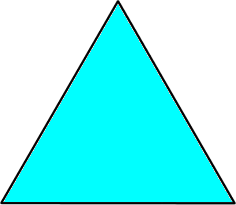Instruction vs. Selection
The main difference between an instructional system and a selectional system is that the instructional system uses information from the environment to change the properties of the object in question, but a selectional system has a large and varied population of objects, and the ones that are most fit for the environment are differentially reproduced. Hopefully an example Edelman uses from immunology will help clear this up.
|
The theory prevailing before the present one was called the theory of instruction. Its basic assumption was that, in the immune system, a foreign molecule transferred information about its shape and structure to the combining site of the antibody molecule. It then removed itself (the way a cookie cutter would be removed from dough) leaving a crevice of complementary shape that could then bind to all foreign molecules with regions having the shape with which the impression was originally made. It is obvious why this is an instructive process: Information about the three-dimensional structure is posited to be necessary to instruct the immune system how to form an antibody protein whose polypeptide chain folds around that structure to give the complementary shape. |
However, it was discovered that this theory was wrong. The immune system was in fact a somatic selection system. Most laypeople do not realize that evolution is really just a search algorithm, and the most efficient one ever found in the proper problem domains. It is a specific example of a selection system.
|
In evolution, organisms are more or less adapted to events in the environment. This adaptation occurs even when environmental changes cannot be predicted (that is even when the changes represent novelties). The process of adaptation occurs by selection on those organismal variants that are on the average fittest, and what makes them fittest does not require prior explicit information ("instruction") about the nature of the novelties in the environment. The selective environmental changes are, in general, independent of variation in the population of organisms, although selection resulting from such changes may add to that variation. In sum, there is no explicit information transferred between the environment and organisms that cause the population to change and increase its fitness. Evolution works by selection, not by instruction. There is no final cause, no teleology, no purpose guiding the overall process, the responses of which occur ex post fact in each case. |
The algorithm can be run on many different kinds of things and not just biological organisms in evolution. In the immune system it is run on a population of different antibody molecules. Those that encounter foreign molecules are reproduced, and those that do not are not magnified in this way. The algorithm works in the immune system on a much shorter time scale than it does in evolution. The thing that selectional systems give us in this debate that instructional systems do not, is that selectional systems do not have to have any prior knowledge of the environment, and require no explicit information transfer from the world. Whereas with the instructional system you are left with the question of who or what decides what is important for the system to learn!
Notes:
Folksonomies: natural selection selection cognitive development instruction
Taxonomies:
/technology and computing (0.429790)
/art and entertainment/music/music reference/music composition and theory (0.406583)
/science/medicine/immunology (0.402254)
Keywords:
explicit information (0.968088 (positive:0.348965)), selectional systems (0.757735 (neutral:0.000000)), Bright Air (0.752884 (positive:0.567131)), foreign molecules (0.751204 (neutral:0.000000)), prior explicit information (0.732963 (neutral:0.000000)), environmental changes (0.725886 (negative:-0.515385)), explicit information transfer (0.723158 (neutral:0.000000)), proper problem domains (0.721210 (positive:0.681568)), shorter time scale (0.707325 (negative:-0.204395)), selective environmental changes (0.695733 (neutral:0.000000)), example Edelman (0.594392 (positive:0.890075)), antibody molecule (0.581017 (positive:0.343478)), varied population (0.573109 (positive:0.230167)), main difference (0.565603 (positive:0.505983)), Instruction vs (0.562819 (positive:0.304714)), antibody protein (0.559725 (positive:0.278140)), polypeptide chain (0.551580 (positive:0.278140)), somatic selection (0.549366 (neutral:0.000000)), basic assumption (0.548566 (positive:0.218023)), foreign molecule (0.547567 (positive:0.343478)), cookie cutter (0.544265 (negative:-0.391681)), instructive process (0.541387 (negative:-0.384848)), search algorithm (0.540089 (neutral:0.000000)), biological organisms (0.538291 (neutral:0.000000)), organismal variants (0.536682 (neutral:0.000000)), evolution (0.533355 (positive:0.148186)), three-dimensional structure (0.532430 (positive:0.278140)), different antibody (0.532127 (neutral:0.000000)), specific example (0.527035 (positive:0.722914))
Entities:
immune system:FieldTerminology (0.805591 (positive:0.171118)), Edelman:Person (0.306210 (positive:0.890075))
Concepts:
Immune system (0.945391): dbpedia | freebase | opencyc
Antibody (0.804319): dbpedia | freebase
Organism (0.674564): dbpedia | freebase
Immunology (0.577066): dbpedia | freebase | opencyc
Bacteria (0.575056): dbpedia | freebase | opencyc
Evolution (0.566703): dbpedia | freebase | opencyc
Humoral immunity (0.534589): dbpedia | freebase | opencyc
Immunity (0.528479): dbpedia | freebase | opencyc






